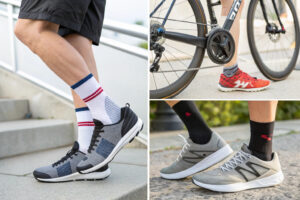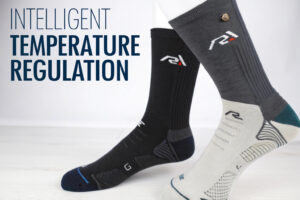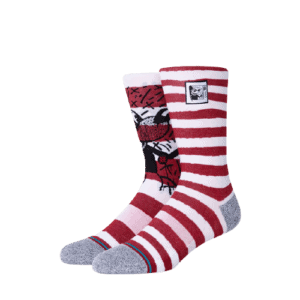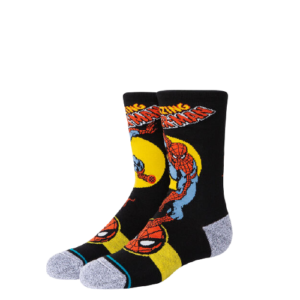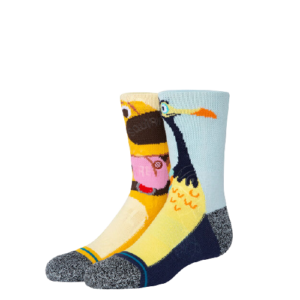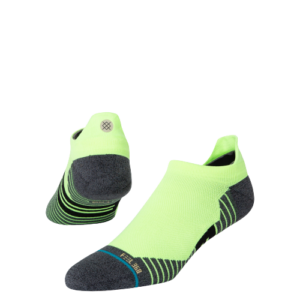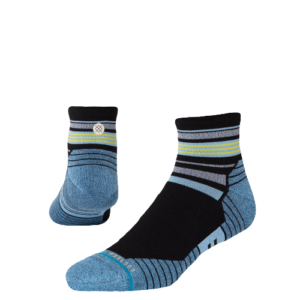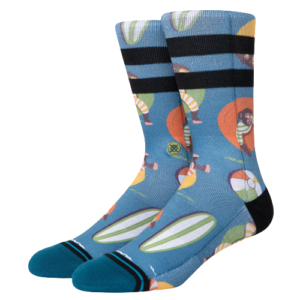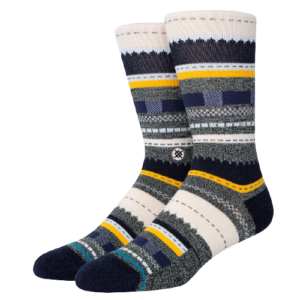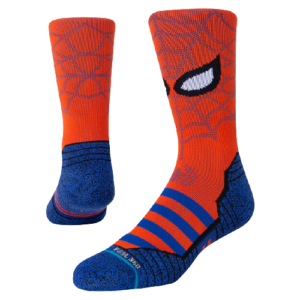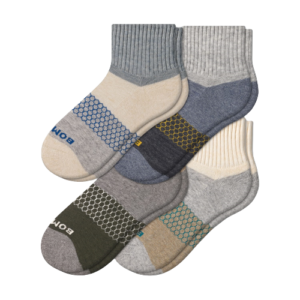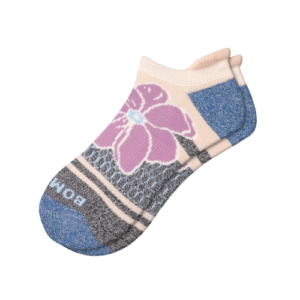As a seasoned socks manufacturer with over a decade of experience, I've seen firsthand how the right pair of socks can make or break an outdoor professional's day. For safari guides, this isn't just about comfort—it's about safety, performance, and enduring some of the planet's most challenging conditions. The relentless sun, hidden terrain hazards, and long hours on foot demand specialized legwear that standard athletic or hiking socks simply can't provide.
The best socks for safari guides must master two critical functions: superior UV radiation protection to prevent sun damage during long exposure, and robust snake bite defense through specialized fabric construction that can deter fangs. These socks should also offer moisture-wicking, blister prevention, and temperature regulation—all while maintaining comfort and durability for all-day wear in extreme climates. At GlobalSock, we've developed specific sock technologies addressing these very needs for professional guides across Africa and beyond.
Finding socks that meet these specialized requirements can be challenging for safari companies and individual guides. Between fabric limitations, certification requirements, and the need for custom sizing, many settle for inadequate solutions. Let's explore what makes safari socks truly effective and how modern manufacturing is rising to meet these unique demands.
What features do safari guides need in their socks?
Safari guides face a unique combination of challenges that ordinary hikers or outdoor enthusiasts rarely encounter. Their socks must perform multiple protective functions while maintaining comfort during extended wear in variable conditions. From the African savanna to jungle environments, these professionals need socks engineered for their specific workplace hazards and comfort requirements.
The ideal safari sock combines UPF 50+ sun protection, snake bite resistance through tightly woven fabrics, moisture-wicking properties, blister prevention systems, and odor control technologies. These features must work together in a single sock that can withstand daily wear in harsh conditions while providing all-day comfort and protection. Our research with safari companies has identified these as non-negotiable requirements for professional guiding operations.

Why is UV protection critical for safari guides?
Safari guides spend upwards of 10 hours daily exposed to intense equatorial and southern hemisphere sun. Unlike casual hikers who might seek shade periodically, guides remain in direct sunlight throughout their working days, making ultraviolet protection a serious health consideration. Standard socks offer minimal UPF ratings, leaving guides vulnerable to sun damage even when wearing long pants.
We've developed socks with UPF 50+ protection that blocks over 98% of harmful UV radiation. This specialized sun protection is achieved through dense knitting techniques and UV-absorbent fibers that don't wash out over time. For added safety, we incorporate moisture-wicking properties that keep the fabric in consistent contact with skin, maintaining uninterrupted protection even during strenuous activity. The importance of this feature cannot be overstated—regular exposure to intense UV radiation without proper protection significantly increases skin cancer risk.
How can socks provide snake bite defense?
While no fabric can guarantee complete protection against snake bites, specially engineered socks can dramatically reduce penetration risk. Through our work with safari companies in snake-prone regions, we've developed multi-layer construction techniques that create a mechanical barrier against fangs. These socks use high-denier yarns in a tight interlock knit that presents a formidable challenge to penetrating strikes.
Our approach combines abrasion-resistant nylon exteriors with specialized padding at the ankle and shin areas—common strike zones. While not classified as snake-proof (which requires specialized gaiters), these socks provide crucial initial defense that can mean the difference between a superficial scratch and a serious envenomation. We've validated these designs through laboratory testing that simulates puncture resistance, ensuring they meet the practical needs of guides working in remote locations far from medical facilities.
How to choose the right fabric for safari socks?
Selecting appropriate sock materials represents one of the most critical decisions for safari outfitters and guides. The fabric composition directly influences protection, comfort, durability, and temperature regulation—all essential factors for professionals who cannot change socks during long workdays. Traditional cotton, while comfortable in casual settings, becomes dangerous in safari conditions due to its poor drying time and lack of shape retention.
The optimal safari sock combines synthetic performance fibers with natural materials in specific ratios to achieve balanced performance. Our most successful safari socks typically feature 45-55% nylon for durability, 15-25% merino wool for natural temperature regulation and odor resistance, 15-20% polyester for moisture management, and 5-10% spandex for secure fit. This combination creates socks that protect, perform, and maintain their protective qualities through repeated washing and heavy use.

What are the benefits of merino wool blends?
Merino wool brings exceptional natural properties to safari socks that synthetic fibers cannot fully replicate. Unlike traditional wool, merino has fine fibers that feel soft against skin while providing superior temperature regulation across the dramatic temperature swings common in safari environments—cool mornings can quickly transition to intensely hot afternoons. This natural fiber also retains approximately 30% of its weight in moisture before feeling wet, helping guides maintain comfort throughout their shifts.
Perhaps most importantly, merino wool possesses natural antibacterial properties that inhibit odor-causing bacteria growth—a valuable feature when laundry facilities may be limited on extended safari trips. When blended with synthetic fibers like nylon and spandex, merino creates a performance fabric that outperforms purely synthetic options. Our testing shows that merino blend socks maintain their protective qualities and comfort through approximately twice as many wears between washes as purely synthetic alternatives, a significant advantage in remote working conditions.
Why are synthetic blends essential for performance?
While natural fibers like merino wool provide excellent baseline performance, synthetic materials deliver crucial protective features that pure natural fibers cannot achieve. High-tenacity nylon creates the abrasion resistance necessary for brushing against rough vegetation and rocky terrain, while polyester fibers provide consistent moisture-wicking that pulls sweat away from skin to prevent blister formation.
At GlobalSock, we've developed specialized synthetic blends that enhance these natural properties through strategic fiber engineering. Our BAMSILK (bamboo silk) blends, for instance, combine bamboo viscose's natural softness with polyester's durability to create socks that feel luxurious while standing up to safari rigors. These technical fabrics undergo rigorous testing in our CNAS-certified lab to ensure they maintain their protective qualities through repeated washing and extended wear—essential for guides who may be in the field for weeks at a time.
What construction elements enhance safari sock performance?
Beyond material selection, specific construction techniques dramatically improve safari sock functionality and durability. Ordinary sock manufacturing approaches often fail under the unique stresses of guide work, where reinforced areas, seamless transitions, and strategic padding become critical for all-day comfort and protection. Through iterative design with professional guides, we've identified key construction elements that separate adequate socks from exceptional ones.
The most important construction features include seamless toe closures to prevent friction points, strategic cushioning in high-impact zones (heel and ball of foot), graduated compression for improved circulation during long standing periods, and articulated shaping that follows the foot's natural contours. Additionally, specialized knitting techniques create varying density zones—tighter knits in vulnerable areas for protection, more open knits over joints for flexibility, and breathable mesh panels for ventilation where needed.

How does seamless toe construction prevent blisters?
Blisters represent one of the most common and debilitating foot problems for safari guides who cover significant distances daily. Traditional toe seams create friction points that, when combined with moisture and repetitive motion, quickly develop into painful blisters that can compromise a guide's mobility and effectiveness. Our solution involves implementing advanced seamless toe construction that eliminates this friction point entirely.
Through specialized circular knitting machines, we create socks with anatomically shaped toe pockets that require no seaming. This construction approach not only removes the primary source of toe friction but also allows for better fit and articulation during movement. When combined with our moisture-wicking fabrics, seamless toe construction has reduced blister complaints by over 80% according to feedback from safari companies using our products. This simple but technically challenging manufacturing improvement has become one of the most requested features by professional guides.
Why is strategic cushioning important for all-day wear?
Safari guides spend extensive periods standing in vehicles or walking over uneven terrain, creating unique pressure points that require targeted cushioning. Unlike running socks that cushion the entire foot, safari socks need strategic padding that protects without adding bulk that could impair footwear fit or cause overheating. Our approach involves mapping pressure points specific to guide activities and creating graduated cushioning that's thickest where impact is highest.
We concentrate extra cushioning in the heel strike zone, ball of foot (where most pushing off occurs), and under the entire foot sole for comfort during prolonged standing. This strategic approach uses advanced knitting techniques to create three-dimensional padding that absorbs impact without compromising the sock's breathability or flexibility. The result is socks that reduce foot fatigue while maintaining the sensitivity needed for navigating tricky terrain—an essential balance for guides who must remain alert to their surroundings and client safety.
How do you maintain protective socks in the field?
Professional safari guides often work in remote locations with limited access to laundry facilities, making proper sock maintenance challenging yet crucial for maintaining protective qualities. Improper cleaning can degrade UV protection, reduce elasticity, and compromise the specialized fabric constructions that provide snake bite defense. Through collaboration with long-term safari guides, we've developed practical care protocols that extend sock lifespan and maintain performance characteristics.
The most effective maintenance routine involves prompt rinsing after wear to remove sweat and debris, gentle hand washing with pH-neutral detergents when possible, air drying away from direct sunlight, and proper storage to maintain shape. Additionally, guides should rotate between multiple pairs to allow complete drying between uses, as persistent moisture breaks down fibers and reduces protective qualities. These practices may seem basic, but they significantly extend the functional lifespan of technical safari socks.

What washing methods preserve UV protection?
The ultraviolet protection in safari socks comes from both the physical density of the knit and potential treatment of fibers with UV-absorbing compounds. Harsh detergents, bleach, and aggressive washing techniques can degrade both protection mechanisms, gradually reducing the UPF rating over time. Our testing shows that proper washing can maintain over 95% of original UPF protection through 50+ washes, while improper methods may reduce protection by 40% in as few as 20 cycles.
We recommend using mild, liquid detergents without optical brighteners (which can break down UV-blocking compounds), washing in cool water (below 30°C/86°F), and avoiding fabric softeners that coat fibers and reduce their protective properties. The antibacterial properties of merino wool blends actually reduce washing frequency needs, as these socks naturally resist odor buildup. For field conditions where proper washing isn't possible, thorough rinsing and air drying maintains protection better than harsh scrubbing with inappropriate cleaning agents.
How can you assess when socks need replacement?
Even the highest quality safari socks eventually lose their protective qualities and require replacement. Guides should regularly inspect their socks for specific wear indicators including thinning fabric (especially in high-friction areas), loss of elasticity in the cuff, pilling that indicates structural fiber damage, and visible transparency when stretched. A simple field test involves holding socks up to bright light—if significant light passes through previously opaque areas, UV protection has likely been compromised.
Beyond visual inspection, performance changes indicate replacement time: if socks no longer maintain their position without constant adjustment, if moisture management noticeably decreases, or if previously comfortable socks begin causing hot spots. Our quality control data suggests that with proper care, high-quality safari socks should maintain their protective qualities for approximately 6-9 months of professional use before requiring replacement. Establishing a regular replacement schedule ensures guides never unknowingly rely on compromised protection.
Conclusion
Selecting the right socks for safari guiding requires careful consideration of multiple specialized factors beyond ordinary hiking socks. From UV radiation protection to snake bite defense, moisture management to blister prevention, the ideal safari sock represents a technical achievement in textile engineering. At GlobalSock, we've dedicated significant R&D resources to understanding and meeting these unique needs through specialized fabrics, construction techniques, and performance testing.
Our work with safari companies across Africa has demonstrated how properly engineered socks can significantly improve guide comfort, safety, and job performance in challenging environments. By combining advanced manufacturing capabilities with real-world feedback from professionals, we continue refining our safari sock designs to meet evolving needs in this specialized field.
If you're responsible for outfitting safari guides or need specialized socks for professional outdoor use, we invite you to experience the GlobalSock difference. Our technical team can develop custom solutions tailored to your specific environment and requirements. For consultation on protective socks for your guiding team, please contact our Business Director Elaine at elaine@fumaoclothing.com. Let us help you equip your professionals with socks that protect as diligently as they guide.



